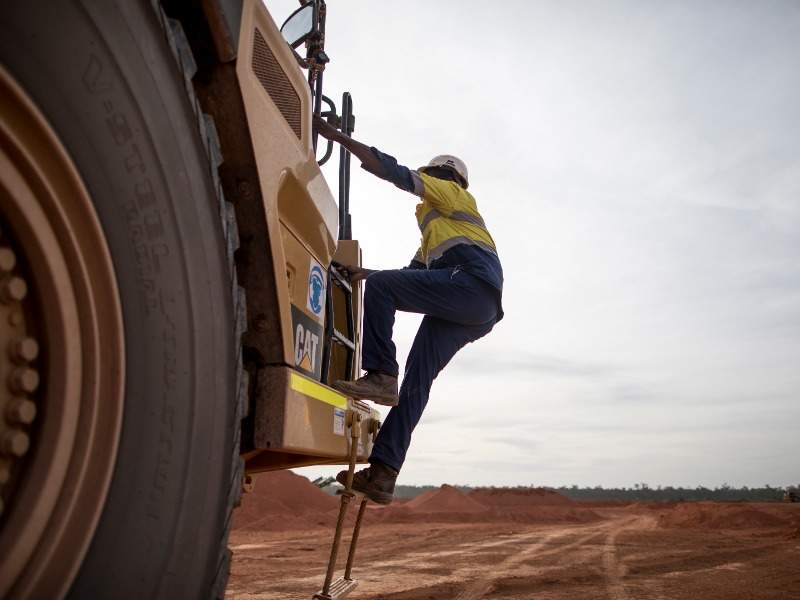Amrun bauxite mine (earlier known as South of Embley) is a high-quality bauxite deposit located on the Cape York Peninsula, Australia. It is expected to replace the exhausting East Weipa mine and increase annual bauxite exports by approximately 10 million tonnes (Mt).
Environmental impact statement (EIS) for the project was released in July 2011, while the project was approved in November 2015. Construction of the project was started in 2016 and the first bauxite was produced in 2018.
Initial shipment of approximately 80,000t was made from the Chith export facility to Yarwun alumina refinery in Gladstone, in December 2018. The project is forecasted to reach full production during 2019.
Rio Tinto developed the project with an investment of A$2.6bn ($1.9bn) and expects to produce 22.8 million tonnes per annum (Mtpa) of bauxite, with an option to expand up to 50Mtpa, during its anticipated mine life of 40 years.
The project created approximately 1,200 jobs during construction and 500 jobs during operations.
Amrun bauxite mine geology
The Amrun bauxite mine is located on the western side of the Cape York Peninsula on the Gulf of Carpentaria. It is situated on the portion of mining tenement ML7024 towards the south of the Embley River and on the tenement ML6024.
The mine area is located in the Carpentaria Basin, a Mesozoic intracratonic basin, which is made up of marine and fluvial siliciclastic sediments along with sedimentary rocks in approximately 560,000km² area.
The basin is located above a heterogeneous, crystalline basement of Proterozoic to Paleozoic provinces. Ferruginous duricrust is the main geological unit found at Amrun and is the source of bauxite.
Amrun Project reserves
The Amrun (South of Embley) project is estimated to contain 1.26 billion tonnes of bauxite reserves and 628Mt of resources, as of December 2017.
Mining and ore processing at Amrun
Open-cut mining method is used at Amrun, with majority of mining conducted on ML7024 tenement.
Mining is being performed in the Boyd Point- Pera Head area, which will be extended to Hey Point in the north and Norman Creek area in the south.
Product-grade bauxite is processed at two beneficiation plants at Boyd and Norman Creek, wherein the oversized particles are removed by screening and fine particles are removed by washing and screening.
The product bauxite is reclaimed by a 550t stacker and stockpiled before being loaded onto ships by a conveyor. The refined product will be exported to customers in China.
Infrastructure facilities at Amrun
Access to the Amrun project is through the Peninsula Developmental Road (PDR), which can be reached through Aurukun Road, Beagle Camp, Pera Head, and the Amban access roads.
Power is supplied from a new 20MW diesel-fueled power station, which became operational in June 2018 with 22 diesel generators and four transformers.
Water for the mining operations is collected from the Arraw dam, which is constructed on a tributary of Norman Creek. Additional water is collected from a pump on the Ward River, existing pipelines, and from 12 artesian bores.
Workers will be accommodated at the 1,400-person camp. The project also included the construction of a new ferry terminal at Hornibrook Point in addition to a barge terminal at Humbug Point (Humbug terminal). A combined barge/ferry terminal is also constructed at Hey River for transporting personnel, equipment, and materials.
Other infrastructure facilities include diesel storage facility, workshops, warehouse, administration facilities, a package sewage treatment plant, and general waste disposal system.
Contractors involved
In 2016, Rio Tinto awarded an A$160m ($125m) engineering, procurement, construction and management (EPCM) contract to Bechtel for the project.
Jacobs Engineering drafted the Chith export facility, while McConnell Dowell was engaged for the construction of a 650m-long access jetty and a 350m-long load wharf. Goodline, a local Weipa company, constructed the barge and ferry berth at Hey River.
McConnell Dowell was supported by COSCO Heavy Industry (CHIC), Shanghai COSCO Kawasaki (SCK), Keda Heavy Industry (KDHI), and Third Harbour Engineering Construction (THEC) for the construction and fabrication of wharf and jetty.
In December 2016, Rio Tinto awarded Civmec two contracts worth A$160m ($119m) for the construction of the processing plant and for the part-supply and manufacturing of a stacker, reclaimer, and ship loader.
Civmec sub-contracted Sarens for the transportation of six 1.300T modules for the Amrun project.
Decmil was engaged in December 2016 for the construction of heavy mining equipment workshops, refueling and wash stations, workshops and welding bays, waste transfer stations, and administration buildings at Amrun.
Vinidex provided more than 26km of high-density pipes and associated fittings for the project under an A$20m ($15m) contract, while Sodexo provided camp management services under an A$22m ($16m) contract.
QBirt was awarded the bulk earthworks contract, worth A$70m ($53m), while Townsville was awarded a $20m ($15.1m) contract to supply 26km of high-density pipes and associated fitting in January 2017.
Aggreko Australia Pacific was awarded an A$100m ($76.1m) contract, in June 2017, to construct and operate the new 20MW power station at Amrun for a period of 15 years.
Northern Haulage and Diesel Services (NHDS) was awarded the general services contract at Amrun including administrative, labour, and construction support at the site.






